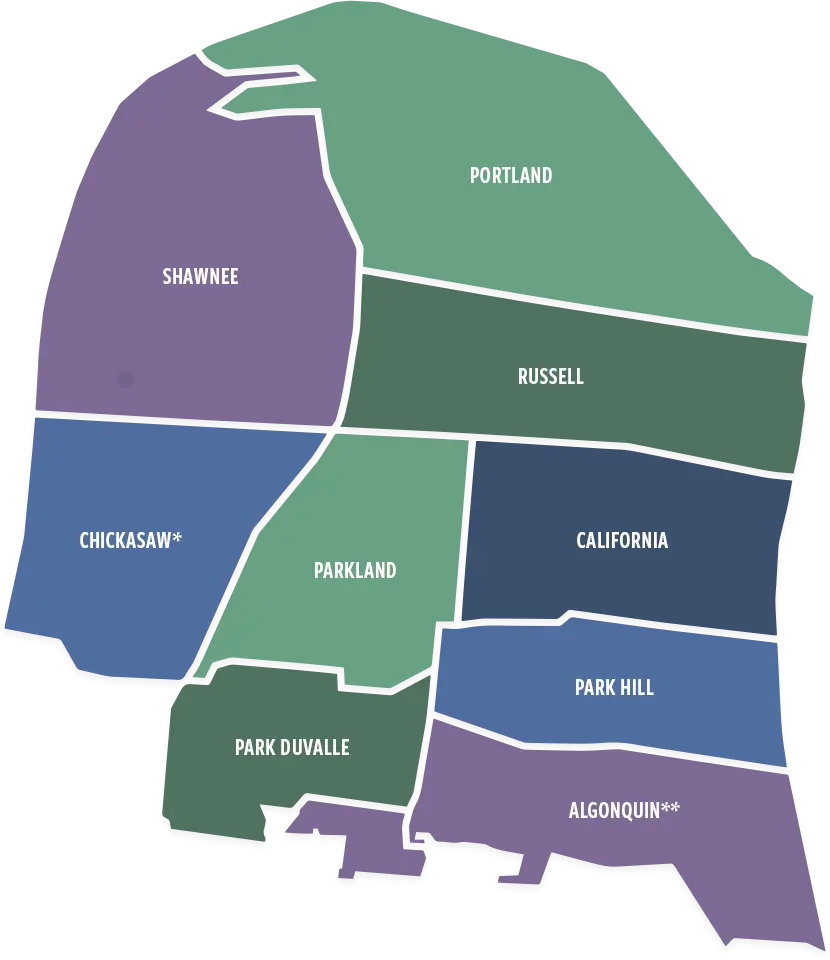After the Flood of 1937 and concerns of growing air pollution from the Rubbertown industrial complex caused many upper and middle-class families to leave for areas further east, the neighborhood became integrated in 1960. The integration process, along with the 1968 race riots in the West End, further worsened the white flight in the area, and left many of the wealthiest areas surrounding the park empty.
However, Shawnee has long been recognized for its beautiful architecture, including streets lined with old growth trees. More affordable housing costs and the presence of the Shawnee Golf Course, which is part of the park, are additional benefits of the neighborhood. Other park amenities include athletic complexes for baseball, football, basketball, tennis, and volleyball, multiple walking paths like the West End Hiking Trail and a riverside path, a grilling and picnic area, public restrooms, and a sprayground.
Its architecture is considered some of the best in Louisville, with 20th-century cottages, bungalows, and other architectural styles making up a large portion of the residential areas and a newer residential complex called Fontaine Estates offering contemporary housing on the site of Fontaine Ferry Park, an amusement park that is seen as a focal point in the struggle for integration. The neighborhood also offers residents the Shawnee Christian Healthcare Center, Shawnee Boys and Girls Club, a community garden, and the Shawnee Community Center, which hosts a Dare to Care Kids Cafe, a public computer lab, free wifi, and a variety of arts, exercise, and cultural programs.



